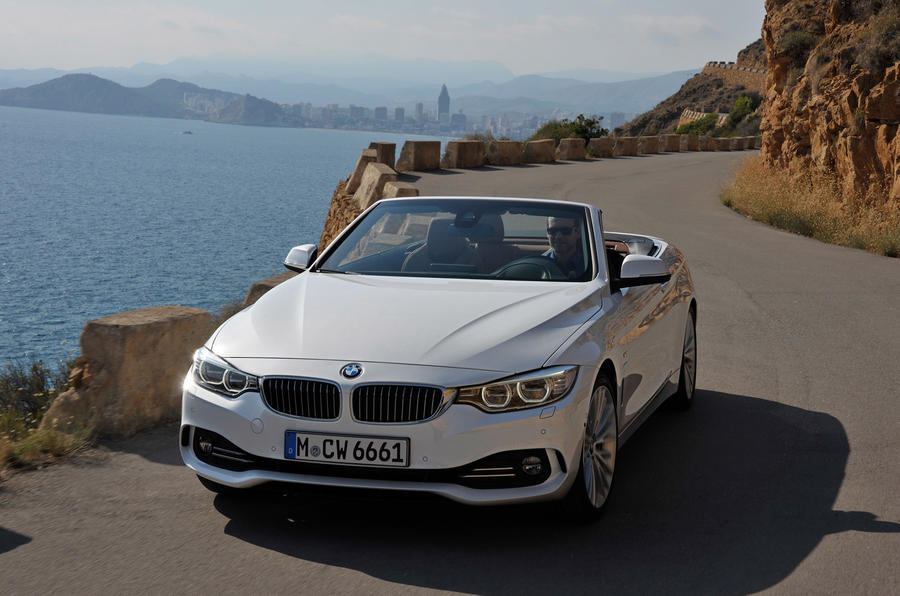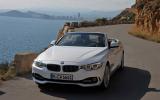What is it?
It’s the BMW 4-series family’s drop-top in 428i auto spec, meaning it’s powered by a 242bhp turbocharged 2.0-litre four-pot sending power to the rear wheels via an eight-speed automatic transmission.
This is the 4-series convertible’s mid-range engine, bookended by the 420d’s 181bhp 2.0-litre turbodiesel and the 435i’s 302bhp turbocharged straight six, both of which we’ve already sampled.
The 4-series convertible picks up the baton from the E93 3-series drop-top, gaining 26mm in length and 50mm in wheelbase, while added track width and a 10mm drop in ride height also help it assume a more planted and athletic stance.
The 4-series coupé’s svelte lines aren’t quite recreated in the convertible, though: the three-piece folding hard-top dictating a more angular trailing roofline than that of its fixed-head brother.
Torsional rigidity is 40 per cent higher than in the E93 (which also used a folding hard top), although the new model is claimed to be up to 20kg lighter. That said, our car’s 1775kg kerb weight is a staggering 230kg more than its coupé counterpart’s, and 115kg more than that of the equivalent Audi A5 cabriolet, which uses a lighter fabric roof.
Even with the roof up, a considerable 53.4 per cent of the 428i’s mass lies over the rear axle (it’s 54 per cent in the manual version), but BMW has reconfigured and strengthened the rear suspension in a bid to counteract the dynamic implications of this sumo-on-a-see-saw weight distribution.
Entry-level SE spec is generous, with highlights including parking sensors fore and aft, leather upholstery, heated front seats (electrified as standard in the convertible to aid rear-seat access), colour 6.5in screen and Drive Performance Control (DPC) to toggle dynamic settings.
Our car’s Luxury spec adds £2500 to the SE’s £38,570 price tag and brings the likes of 18in alloys, sports seats, sat-nav and smatterings of chrome and wood.



















Join the debate
Add your comment
M135i or M235i?
I do agree with other posters - to me a BMW is suppose to be a drivers car, with the lower cars becoming fwd drive car enthusiasts will go elsewhere. I know a lot of people don't really care about the car they have - but some of us still do. I may only drive a astra diesel at present but my financial situation is now changing and I would like to experiance a straight 6 engine before they do completely die of extinction.
I would also like a v8 but will have to wait till I visit america to experiance one.
2 Many or 2 Few?
TOO FEW CYLINDERS, OR TOO MANY?
Six cylinders good, four cylinders bad? Try three! I've heard no complaints about harshness in the Mini and I8 threes.